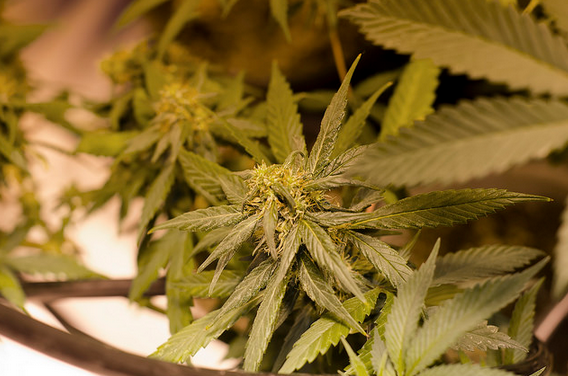
TORONTO – When Sarah Stuive first got into the natural pest control business – which uses predatory insects, or “good bugs,” to weed out pests – she never expected to be working with cannabis plants.
But thanks to Health Canada regulations that limit the use of chemical pesticides on medical marijuana in order to make sure the plants are safe for consumption, the biological control specialist says she’s seeing an uptick in business.
“I have seen a lot of growth in demand since the start of the cannabis industry,” said Stuive, who works for Global Horticultural and also provides her services to vegetable farmers and plant growers. “It’s a new alternative to chemicals.”
Although certain chemical pesticides are permitted on medical cannabis – Health Canada currently has a list of seven products that have been approved for use – some producers prefer to avoid chemical sprays, which can leave residue on the plants.
“Specifically in this industry, it’s very important not to apply chemicals topically, because when you burn the plant for the medicinal compounds, any residual product that’s left on the leaves as a resin, you’ll also be burning that and inhaling it,” says Emily Moeller, the grow and production manager at Bedrocan Cannabis Corp.
Street marijuana produced in illegal grow-ops tends to be riddled with such chemicals, according to Moeller.
That can be particularly harmful for people whose immune systems are compromised, says Cam Battley, Bedrocan’s vice-president of communications.
“The product we produce is being used by patients with a variety of health conditions,” Battley said in an interview at the company’s production facility east of Toronto.
“Some of them are immuno-compromised; they have HIV/AIDS. Some of them are using medical cannabis to manage the symptoms associated with chemotherapy. For people in these conditions, for people with chronic illnesses, it’s better not to have any residue at all on our product.”
There are a number of pests that can feed on cannabis crops which specialists like Stuive are on the lookout for, including fungus gnats, shore flies, thrips and spider mites.
At Bedrocan, Stuive – whose job involves administering the pest control and monitoring its effectiveness – uses three kinds of beneficial insects to keep pest populations in check.
Hypoaspis miles is a tiny mite that lives in the soil and preys on fungus gnats, shore flies and thrips. Stuive administers it by sprinkling peat moss containing the mite onto the soil in which the cannabis plants are growing.
Microscopic round worms called nematodes are applied through the water system and will eat the eggs of fungus nuts that have been laid in the root ball of the plant.
And amblyseius swirskii, a predator that lives on the leaves of the plant, feeds on thrips, white flies and spider mites. It’s often contained in sachets that are either stuck into the ground on sticks or hung on the plant with a string.
Biological pest control can be costlier up front than using chemical sprays, says Moeller, but in the long run producers who use this strategy could end up saving money.
“You won’t have to throw entire crops out because they’re contaminated,” Moeller says.